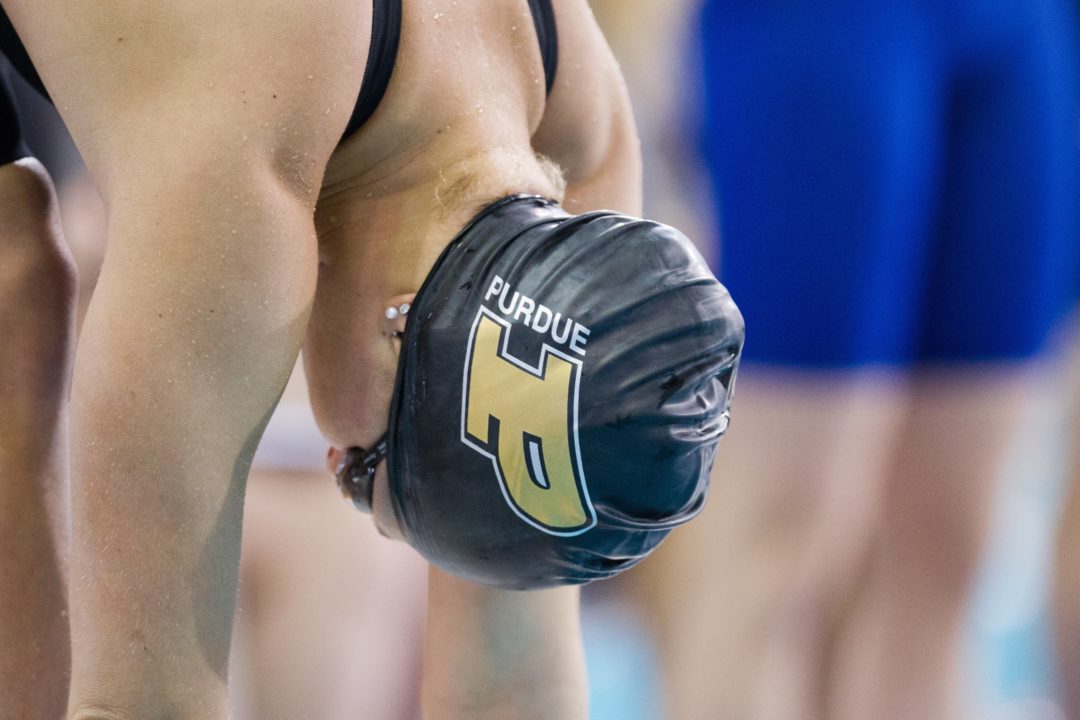Last year was so nice, the Big Ten decided to make it twice. For the second-straight season, the Indiana-Purdue dual meet on January 26th will be televised live on the Big Ten Network.
Last year, the meet was in Bloomington, where Indiana swept their rivals by scores of 166-134 (men) and 169-130 (women). This year, it moves across the state to the top-notch natatorium in Lafayette, where the Boilermakers will hope to return the favor in their home pool. This year’s meet will feel a bit different, as it will be the women’s meet only. Last year, for the first time in two decades, the coaches agreed to reschedule their men’s dual meet to be on the same day for this event, but this year decided against repeating that.
This is a new stage in the rivalry afforded to them by the Big Ten Network, which receives bids from schools each year to televise certain regular season events. The level of production put into these meets are unlike any ever seen for a college dual meet, which will hopefully continue to bring a new audience into the sport. Rowdy Gaines and Cynthia Potter, Olympic commentators, are signed on to call this year’s meet again, joined by Bernie Guenther. That’s a veteran group of analysts all with expansive swimming backgrounds that will give the meet the insight and knowledge that it deserves.
Until last year’s dual meet, the Big Ten Network had never shown live swimming of any kind, including the Big Ten Championships (which usually aired on taped-delay).
Both teams have great squads this season, though Purdue’s loss of Emily Fogle for the year with a hip injury will dampen what could have been some great breaststroke showdowns.
To read more about last year’s meet, click here.
To learn more about how the Big Ten Network chooses which events to televise, click here for our interview with them prior to last year’s meet.

I’ll watch. Hopefully some day we’ll all look back and laugh remembering a time when all ncaa swim meets weren’t available to viewers. As a viewer adding my $0.02 worth, I wouldn’t complain about poor production quality if it meant more meets were offered by the big 10 network.